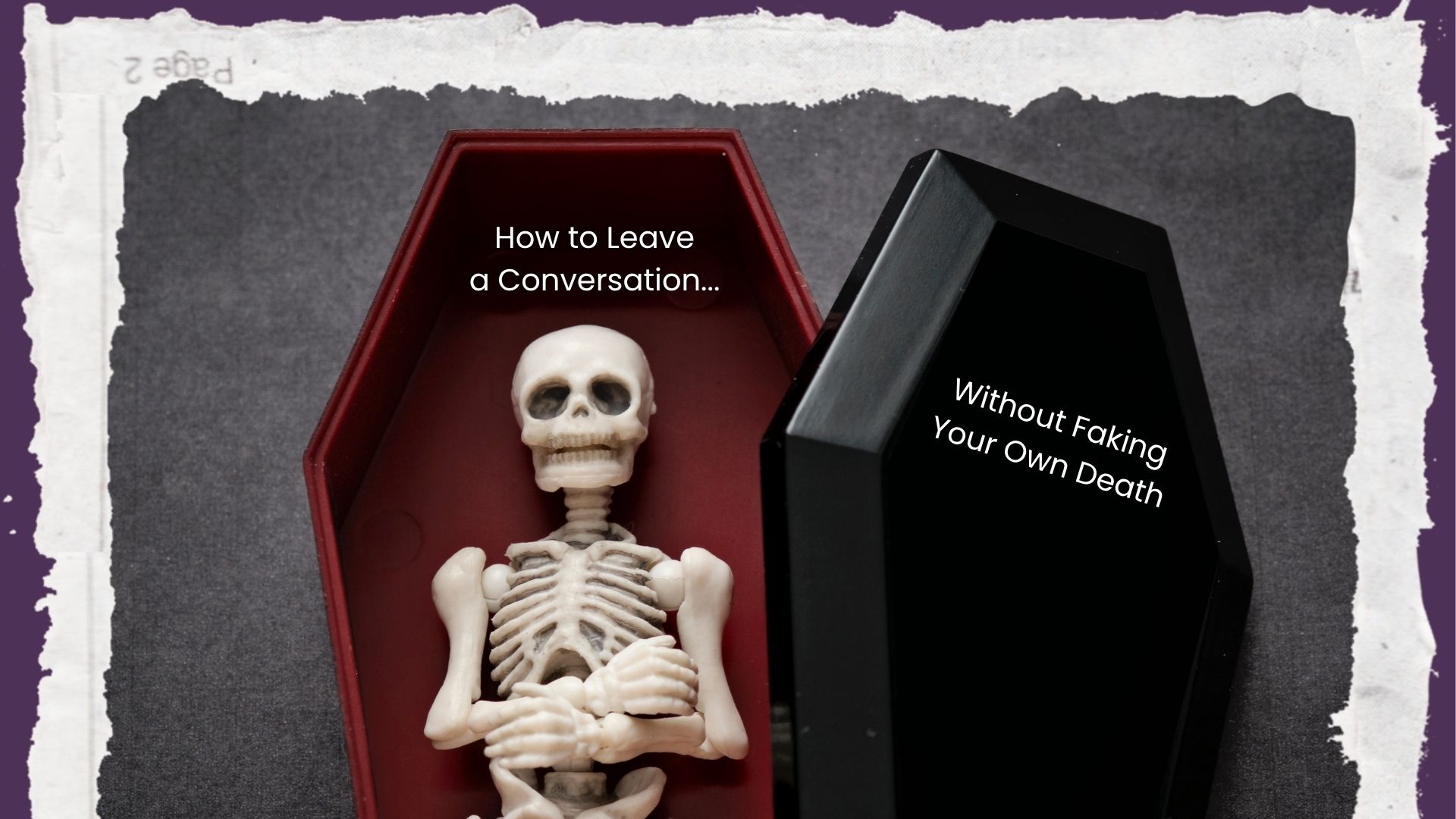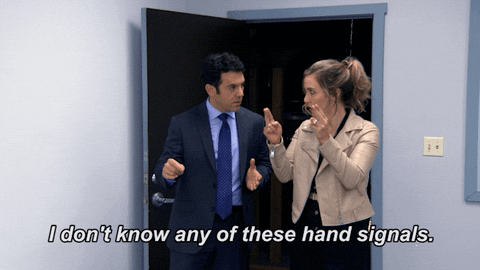How to Leave a Conversation Without Faking Your Own Death
How do you actually leave a conversation without sounding rude?

Interview multiple candidates
Lorem ipsum dolor sit amet, consectetur adipiscing elit proin mi pellentesque lorem turpis feugiat non sed sed sed aliquam lectus sodales gravida turpis maassa odio faucibus accumsan turpis nulla tellus purus ut cursus lorem in pellentesque risus turpis eget quam eu nunc sed diam.
Search for the right experience
Lorem ipsum dolor sit amet, consectetur adipiscing elit proin mi pellentesque lorem turpis feugiat non sed sed sed aliquam lectus sodales gravida turpis maassa odio.
- Lorem ipsum dolor sit amet, consectetur adipiscing elit.
- Porttitor nibh est vulputate vitae sem vitae.
- Netus vestibulum dignissim scelerisque vitae.
- Amet tellus nisl risus lorem vulputate velit eget.

Ask for past work examples & results
Lorem ipsum dolor sit amet, consectetur adipiscing elit consectetur in proin mattis enim posuere maecenas non magna mauris, feugiat montes, porttitor eget nulla id.
- Lorem ipsum dolor sit amet, consectetur adipiscing elit.
- Netus vestibulum dignissim scelerisque vitae.
- Porttitor nibh est vulputate vitae sem vitae.
- Amet tellus nisl risus lorem vulputate velit eget.
Vet candidates & ask for past references before hiring
Lorem ipsum dolor sit amet, consectetur adipiscing elit ut suspendisse convallis enim tincidunt nunc condimentum facilisi accumsan tempor donec dolor malesuada vestibulum in sed sed morbi accumsan tristique turpis vivamus non velit euismod.
“Lorem ipsum dolor sit amet, consectetur adipiscing elit nunc gravida purus urna, ipsum eu morbi in enim”
Once you hire them, give them access for all tools & resources for success
Lorem ipsum dolor sit amet, consectetur adipiscing elit ut suspendisse convallis enim tincidunt nunc condimentum facilisi accumsan tempor donec dolor malesuada vestibulum in sed sed morbi accumsan tristique turpis vivamus non velit euismod.
This is something I get asked all the time when running workshops.
How do you actually leave a conversation without sounding rude?
It comes up so often that I figured… let’s add this to the blog.
Because let’s be honest, we’ve all been there.
You’re smiling, nodding, trying to stay present, but your brain has quietly started scrolling your mental to-do list.
You want to leave, but you don’t want to look cold. You’re a kind person, not a ghoster 👻.
Here’s the thing: most of us were never taught how to end conversations. We were told to be polite, not how to politely leave.
But ending a conversation isn’t rude. It’s responsible.
It’s how you protect your time, your energy, and your sanity.
When You Don’t Want to Connect
Sometimes, you just don’t click with someone. And that’s okay.
Not every chat needs to turn into a LinkedIn connection or a future collaboration.
Here’s my rule: you don’t have to fake interest, but you do have to stay kind.
The world is small, especially the event world, and people talk.
I once met a startup founder at an event. Big smile. All the right buzzwords. The kind of guy who seemed like he’d read How to Network Like a CEO cover to cover.
We started chatting, and about thirty seconds in, I could tell the switch had flipped.
The moment he realised I wasn’t an investor or someone he could immediately pitch to, his body language changed. The energy dropped. His eyes started scanning the room for someone “more valuable.”
Then he said, “I should probably find someone from TechCrunch,” and walked away.
Now, here’s the thing. It’s completely fine to move on from a conversation. We’ve all done it. You’re allowed to protect your time and focus your energy.
But how you do it matters.
Because what he did wasn’t about efficiency. It was about disregard.
And that’s the difference between being intentional and being inconsiderate.
It’s not about who I was. It’s about how he made me feel.
He didn’t just end a conversation; he dismissed a person.
So when you’re talking to people, especially at networking events, remember this: you never really know who you’re speaking to, or who they know, or how they might remember you later.
It’s okay to leave a conversation. Just do it with grace.
The Wing Person’s Secret Weapon
If you’ve ever been to an event with me, you’ll know about the signals.

My Wing People and I have a whole system for graceful exits. Think of it as conversational charades for social survival.
(These aren’t our real ones, by the way. Those are top secret.)
👂 Tug your ear → “Please save me.” 🥂 Touch your drink → “Give me 60 seconds to wrap up.” 🤍 Hand on heart → “It’s actually going fine.” 📱 Fake phone check → “Abort mission.”
A good Wing Person can rescue you mid-chat without missing a beat. They might sweep in with,
“Hey, I’ve been looking for you!” or “Shaena, we promised to grab that group photo!”
Smooth. Natural. Drama-free.
Pro tip: Agree on your signals before the event. That way, when your Wing Person steps in, it looks effortless, not like a covert operation.
The Smile, Shift, Share Method
When you’re flying solo, this is my go-to move.
Smile. Lead with warmth.
“It’s been lovely chatting.”
Shift. Use “and,” not “but.”
“It’s been lovely chatting, and I promised myself I’d circulate before the next panel.”
Share. End on a positive note.
“Thanks again for sharing your story. Have a great rest of the event.”
Simple. Kind. Complete.
If you don’t want to stay in touch, that’s your out. No fake promises needed.
Explain Your Next Thing
One of the easiest ways to leave without awkwardness is to clearly say what you’re doing next.
It doesn’t have to be a big deal. It just has to be specific.
That tells the other person you’re not rejecting them, you’re just moving on.
Try these:
- “I’m going to grab something to eat before the next panel starts.”
- “I need to check in with a colleague before they leave.”
- “I’m heading out to get some fresh air.”
- “I promised I’d stop by the sponsor booth before they pack up.”
- “I’ve been sitting all morning, so I’m going to stretch my legs.”
- “I told myself I’d say hello to a few more people before the keynote.”
Short. Clear. Believable. You’re giving context and protecting your boundaries.
Read the Room
Most conversations tell you when it’s time to go.
Here’s how to spot it:
- The pace slows.
- You start repeating topics.
- The other person glances around or checks their phone.
- Laughter fades and smiles turn polite.

That’s your moment.
End it before it drags. It’s not rude, it’s self-aware.
Redirect Instead of Retreat
Sometimes the conversation doesn’t need to end. It just needs a new direction.
Try these gentle pivots:
- “I love that point. Can I introduce you to someone who’d have an interesting take on this?”
- “That’s such a good question. How did you get into that line of work?”
- “I could talk about this all day, but I promised to check in with my team. Let’s pick this up later.”
Redirection keeps the energy high and the goodbye light.
Don’t Pass People Like Hot Potatoes

This one’s important.
If you know someone tends to trap people in endless conversations, please don’t pass them off to someone else like a hot potato.
I learned this the hard way.
I was new at a networking event when someone smiled and said,
“Have you met Shaena?”
Before I could answer, they’d disappeared.
And that’s how I found myself in a 45-minute one-sided chat with the man everyone knew could talk your ear off.
At first, I thought it was bad luck. Later, I realised everyone else had just strategically escaped.
Now, I’m a professional Wing Woman, so I did my best. Listened. Nodded. Smiled. Closed kindly.
But it didn’t feel great. Not because he was awful, but because it was avoidable.
When we hand someone off like that, we’re not solving the problem. We’re just shifting the discomfort around the room.
Instead:
✅ Step in, not away. If you see someone cornered, rescue them with a quick, “Hey, come meet someone I think you’ll love talking to.”
✅ Set gentle boundaries. “I’ve loved hearing about your project. I promised to circulate before the next panel.”
✅ Model kindness. Networking works best when we protect the flow of the room, not just our own time.
Connection is about collective care.
Look out for each other, especially the new people.
When You Actually Want to Connect Again
If the chat was good and you do want to stay in touch, say it clearly.
It turns your goodbye into a bridge, not a wall.
- “It’s been so great chatting. I’ll message you later this week to swap notes on that topic.”
- “Let’s connect on LinkedIn. I’d love to see how that project turns out.”
- Play the LinkedIn Game - a fun way to follow up
- “Thanks for sharing your insights. I’ll send you that article we talked about.”
Make it easy for the follow-up to feel natural, not forced.
What Not to Do
Let’s call this section: How to Avoid Turning Your Graceful Exit Into a Cringe Parade.
❌ Don’t over-explain. One short reason is enough.
❌ Don’t fake emergencies. Everyone can tell.
❌ Don’t check your phone mid-sentence.
❌ Don’t apologise ten times.
❌ Don’t promise to follow up if you won’t.
Leaving well doesn’t require theatrics. Just honesty and respect.
The Emotional Side of It
Most of us struggle to leave conversations because we don’t want to disappoint anyone. We’re wired to please.
But honesty with kindness lands better than pretending.
A clear, warm exit gives everyone what they need: closure, clarity, and space.
A graceful goodbye isn’t rejection. It’s respect.
The Real Takeaway
Leaving a conversation well is an underrated life skill.
It’s not about avoiding people. It’s about awareness, empathy, and emotional intelligence.
Be kind. Because the founder who brushed you off today might be pitching to you tomorrow.
And the person you politely excused yourself from might become your next great collaborator.
Goodbyes don’t have to be awkward. They can be little acts of grace.
So next time your brain whispers, “Get out,” listen.
Just do it kindly, confidently, and maybe with your Wing Person watching for the signal.
What’s your go-to graceful exit line or signal?
Until then: stay kind, stay curious, and remember, it’s okay to walk away.
#WingWomanWisdom #ConnectionEtiquette #ExitGracefully
Connect with me and highlight your Story in the 'Six Degrees' Newsletter or subscribe to discover inspiring stories!

Related posts
Ready to buzz the tower with me?











